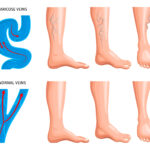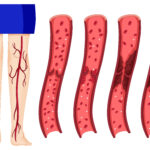If medicines and nonsurgical procedures are not helping with your uterine fibroids and their symptoms, or if your healthcare provider suspects infertility to be caused by these fibroids, or your bleeding is becoming uncontrollable, then surgery might be the next option for you. The goal of surgery may aim at reducing the symptoms caused by uterine fibroids but also at obliterating fibroids. There are several uterus surgery options for fibroids in the uterus that you can opt for depending on the extent of these symptoms and your plans of getting pregnant.
Myomectomy:
This surgery option involves the surgical removal of fibroids and is employed to address issues such as bleeding, infertility, pain, and pressure caused by these growths. Gynecologists use one of four uterine-preserving surgical techniques for the removal of fibroids, namely hysteroscopy, laparoscopy, laparotomy, or robotic-assisted myomectomy. The procedure selection is contingent on factors such as the fibroids’ size, quantity, and location. Since myomectomy preserves the uterus, it is often the preferred choice for women aspiring to conceive in the future. It is essential to realize that the emergence of new fibroids may occur post-surgery. Particularly in cases where a woman has experienced multiple fibroids.
Advantages:
- Preserves the uterus
- Treats the symptoms
- Tailored to fibroid characteristics
- Minimized scarring
- Improved quality of life
- Fertility preservation
Types of Uterus Surgery
Hysteroscopy
In hysteroscopy, a surgeon inserts a slender, illuminated scope through a women’s vaginal canal into the uterus. This method aids extraction via easy identification of fibroids on the inner uterine wall. Operative hysteroscopy may be conducted with either local or general anesthesia, depending on your choices.
Laparoscopy
A sophisticated surgical instrument, along with an illuminated scope, is inserted by creating a minor incision in the abdominal region. This method lets your surgeon precisely visualize, identify, and extract the fibroids. This method eliminates hospital stays and is carried out with general anesthesia.
Laparotomy
This type of myomectomy is also conducted under general anesthesia. An abdominal incision of several inches assists in the fibroid extraction from the deep uterine walls. Hospitalization may be needed for about 1 to 3 days.
Robotic-Assisted myomectomy
During this method, your surgeon employs a small incision to insert a miniature camera and surgical instruments at the operative site. These tools are manipulated with the help of a robotic-assisted surgical device, offering a high-resolution, three-dimensional perspective of the fibroid and its adjacent tissues. As a result, this enhances a surgeon’s range of motion beyond what is achievable by the human hand alone, leading to diminished scarring, reduced postoperative discomfort, and a quicker recovery period. General anesthesia is administered for this procedure.
Recovery Time
The recovery time for this procedure may vary depending on the type of myomectomy that has been performed. The recovery time for the abdominal myomectomy lasts several weeks; patients complain about discomfort during this period. This time is shorter than required for abdominal myomectomy or laparoscopic myomectomy, and patients can resume their normal day-to-day activities within a few weeks. Hysteroscopic myomectomy takes the fastest time of all to recover and is usually an outpatient recovery; most women can get back to their regular routines within a few days. As a result, if we talk about robotic-assisted myomectomy, its recovery time is similar to that of laparoscopic myomectomy.
Adhering to the postoperative care instructions given by your doctor is of utmost importance for a successful recovery. These instructions may include restrictions on certain physical activities, medication changes, and even follow-up appointments.
Hysterectomy
Hysterectomy, the surgical removal of the uterus, stands as the sole assured method to prevent the recurrence of fibroids. It is seen as a definitive solution, mainly designed for women who do not plan to conceive in the future. This intervention is suggested when pain and menstrual bleeding exert a significant impact on the patient’s quality of life. In some cases, this method may also be recommended to women with fibroids that continue to grow even after their menopause.
The approach to hysterectomy usually varies based on certain factors like size, number, and location of these growths. Options involve the insertion of a lighted scope and instruments through a small abdominal incision. Moreover, robotic-assisted surgery, or vaginal surgery, is where the uterus is removed from the vagina. For less invasive procedures, a hysterectomy may necessitate an overnight stay at a hospital while an open surgery would require a three-day visit.
Recovery time from Uterus Surgery
For minimally invasive surgeries, the recovery period for a hysterectomy usually extends up to two weeks, while open surgery may require up to six weeks for a complete recovery. The specific approach chosen for Uterus Surgery depends on an individual’s circumstances.
Choosing the right surgery option for the treatment of fibroids involves consideration. The healthcare team is responsible for providing thorough guidance tailored to your specific needs and situation to help you make a decision that aligns with your reproductive goals and health.




